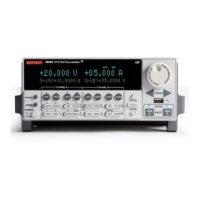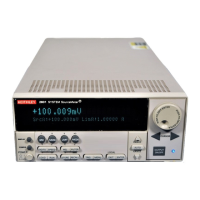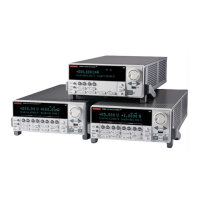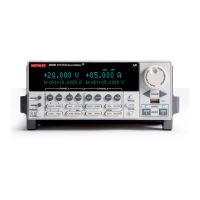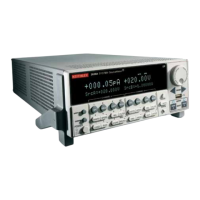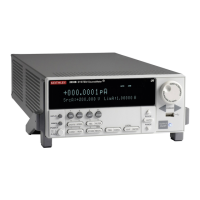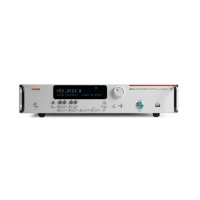19-6 Return to Section Topics 2600AS-901-01 Rev. B / September 2008
Section 19: Remote Commands Series 2600A System SourceMeter® Instruments Reference Manual
Precedence
Operator precedence in TSL follows the table below, from higher to lower priority:
^
not- (unary)
*/
+-
.. (concatenation)
< > <=>=~===
and
or
All operators are left associative, except for ‘^’ (exponentiation) and ‘..’, which are right
associative. Therefore, the following expressions on the left are equivalent to those on the right:
a+i < b/2+1 (a+i) < ((b/2)+1)
5+x^2*8 5+((x^2)*8)
a < y and y <= z (a < y) and (y <= z)
-x^2 -(x^2)
x^y^z x^(y^z)
Logical operators
The logical operators are and, or, and not. Like control structures, all logical operators consider
false and nil as false and anything else as true. The operator and returns its first argument if it
is false, otherwise it returns its second argument. The operator
or returns its first argument if it is
not false; otherwise it returns its second argument:
print(4 and 5)
print(nil and 13)
print(false and 13)
print(4 or 5)
print(false or 5)
Output of code above:
5
nil
false
4
5
Both and and or use short-cut evaluation, that is, they evaluate their second operand only when
necessary. A useful TSL construct is
x = x or v, which is equivalent to:
if not x then x = v end
For example, it sets x to a default value v when x is not set (provided that x is not set to false).
To select the maximum of two numbers x and y, use the following statement (note the and
operator has a higher precedence than
or):
max = (x > y) and x or y
When x > y is true, the first expression of the and is true, so the and results in its second
argument
x (which is also true, because it is a number), and then the or expression, results in the
value of its first expression,
x. When x > y is false, the and expression is false and so are the or
results in its second expression,
y.
The operator not always returns true or false:
